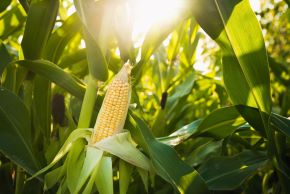
The IOE&IT Daily Update’s series looking at the trade of global commodities continues with an examination of one of the world’s most popular crops in corn.
Corn, otherwise known as maize, is one of the world’s oldest and most ubiquitous crops.
It was first domesticated in Mexico over 10,000 years ago and has since spread around the planet.
While its main use is in food, it can also be used in other manufacturing processes. Corn products can be used in book-binding, textiles and soaps, among other things. Another use is the production of high fructose corn syrup, which can be used as a sweetener and as a substitute for sugar.
Recently, companies have begun exploring the application of corn resins in bio-degradable packaging to replace more traditional plastics. Bio-ethylene, derived from corn husks and leaves, is being sourced from North American farms and is seen by manufacturing conglomerate Dow Chemicals as playing a crucial role in achieving a more sustainable future for both farming and packaging.
Climate change
As with a lot of global commodities, corn is under increasing threat from climate change.
Recently, US farms are being hit by droughts, whilst European and North African producers face the problem of scorching heat. The issue is a long term one, beyond any one bout of seasonal weather, however.
In 2014, Stanford professor David Lobell and a team of researchers analysed weather patterns across the mid-western US and compared them to crop yields in the region. Due to changing agricultural practices, corn farmed in this area was found to be sensitive to climate change.
The research found that over the next 50 years, yields could fall by 15%. This could increase to as much as 30% if agricultural practices weren’t changed to protect crops.
Across the US, which for years has been a leading producer of the crop, farmers are complaining of drought, low rain and rising temperatures combining to damage yields.
Importers
In 2021, the top exporters of corn were:
US $18.8bn
Argentina $8.88bn
Ukraine $5.86bn
Brazil $4.44bn
France $1.92bn
In 2021, the top importers of corn were:
China $7.09bn
Mexico $4.62bn
Japan $3.93bn
South Korea $2.88bn
Vietnam $2.49bn
Although the US still remains a leading producer, geopolitics threatens its hold on the top spot.
Farmers from Ohio told the BBC that Chinese buyers had recently shifted their attention to Brazil, looking to take advantage of a more-politically friendly government. The South China Morning Post similarly reports that South Africa is also benefiting from Chinese buyers switching their attention from the US.
Geo-politics
Other political events have hit global trade in corn.
Ukraine – the world’s third largest producer – faces a de facto embargo after Russia’s illegal invasion. Shipping from Ukrainian ports remains blocked after the collapse of the Black Sea Grain Initiative, which was meant to ease the passage of foodstuffs.
The UN says that 50% of the goods moved under the deal were maize, with a good proportion of these imports heading to developing nations.
Although Reuters reports that investors in corn futures were more confident in the short-term future, the longer term outlook is less clear.
GMO
The future of corn could possibly lie in how it can be modified by humans to adapt to the changing world.
As a crop, it is capable of being cross-bred to produce genetically superior seeds that can withstand extreme temperatures and prove more resilient than existing species. Lab-based genome editing is also used but is controversial.
Some food experts are concerned that they haven’t yet been proven to be safe and there are concerns over how intellectual property rules could be used to restrict access to species of grain.
Several countries ban the import of genetically modified crops and the EU imposes restrictions on these goods being brought into the European area.
Al-Jazeera reports that the US has recently initiated arbitration proceedings against Mexico’s ban on imports of genetically modified crops, relying on the provisions of the North American trade pact.



